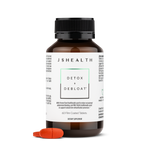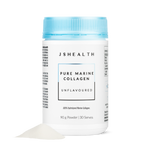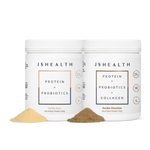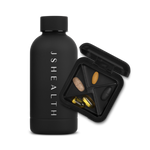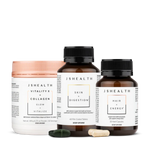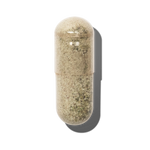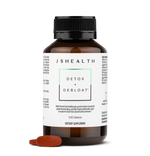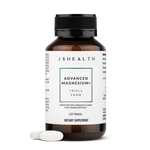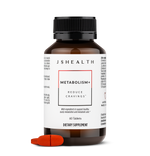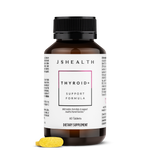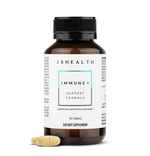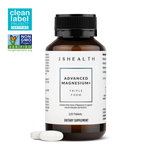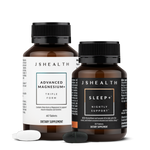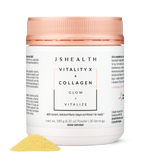25% OFF SUBSCRIPTIONS!*
Which Foods Are High in Magnesium
Making the choices to live The Healthy Life is one of the best investments you can make for yourself. Caring for a healthy body lends itself to a healthy mind, and can help you to get the most out of each and every day.
The three pillars of a healthy lifestyle include: exercise, sleep, and nutrition. Focusing on these three pillars can have a profound effect on our overall health. Nutrition is one aspect of health that can seem overwhelming at first, but it’s vital to make sure that we’re getting all of the vitamins and minerals we need to support our health, all around.
One mineral to prioritize in our diets is magnesium. Let’s take a closer look at what this mineral is, how it is utilized by the body, food sources of magnesium, and other ways to incorporate important nutrients into your diet.
How Is Magnesium Used in the Body?
Magnesium acts as a cofactor to hundreds of enzymes and biochemical reactions within the body that impact a wide range of organ systems and tissues within the body. It also helps support our mitochondria, which means it can support our energy.
However, it can also relax our brain and nervous system, which is why many people take it before bed. Finally, it plays an important role in the production of progesterone, a female hormone that helps regulate the menstrual cycle.
Magnesium also plays a role in blood pressure regulation, nerve function, heart health, energy production, maintenance of DNA, bone health, and protein synthesis. Plus, it acts as an electrolyte, helping to hydrate our bodies from within.
How Much Magnesium Do You Need Daily?
Magnesium is an essential nutrient, which means our bodies can’t make it themselves. Instead, we must get magnesium from food. Getting enough magnesium intake through your diet on a consistent basis is important to maintain an adequate amount of magnesium in the body.
The recommended daily allowance (RDA) of magnesium for adults is anywhere from 310 mg to 420 mg of magnesium. Getting this amount of magnesium on a consistent basis can help us avoid magnesium deficiency, which is caused by low magnesium levels.
Which Foods Naturally Have Magnesium?
Knowing how much magnesium you need on a consistent basis is important, but it’s also important to know which foods are a good source of magnesium. Below is a closer look at some foods that naturally contain magnesium.
Seeds and Nuts
Seeds and nuts are great sources of protein, and they also tend to be a rich source of nutrients. Seeds that are good sources of magnesium include pumpkin seeds, chia seeds, and sunflower seeds. Some nuts that have a healthy dose of magnesium include brazil nuts, cashews, almonds, hazelnuts, and natural nut butters, like peanut butter.
We can enjoy these foods on top of a salad, as a part of a snack or on your whole grain favorite sandwich as a spread.
Leafy Greens
Leafy green vegetables are an excellent addition to any well-rounded diet, as they contain a healthy punch of antioxidants, vitamins, and minerals, including magnesium. Some leafy greens that are high in magnesium include spinach, kale, and collard greens.
Including more leafy greens in our diets can not only increase our daily intake of magnesium but it can also help us toward getting our daily value of other important vitamins and minerals like vitamin C, vitamin K, vitamin A, manganese, potassium, and iron.
Legumes
Legumes are a family of foods that include lentils, peas, and beans. Legumes are foods high in fiber, but they also can contain a good amount of protein and minerals.
Some legumes that contain a good amount of magnesium include:
- Black beans
- Kidney beans
- Soybeans
- Edamame
- Lima beans
- Green peas
Legumes are a fantastic addition to a well-rounded diet as they are low-fat, high-protein, and high-fiber.
Fish
Fish is another great source of natural magnesium. Specifically, halibut and mackerel contain high amounts of magnesium. In addition to being high in magnesium, these fish are rich sources of omega-3 fatty acids and protein.
Fortified Cereal
Magnesium-rich foods are not always a part of our everyday diets, and this is why many packaged foods will try and incorporate dietary magnesium through fortification. Fortified foods are quite common, and some of the most common fortified foods include milk, which is fortified with vitamin D, and flour.
Cereal is often fortified with calcium, iron, vitamins, and even magnesium. With many health-conscious whole wheat options available, cereal can be an excellent addition to your morning and help you to increase your dietary magnesium intake.
Other foods that contain notably high levels of magnesium include dark chocolate, brown rice, swiss chard, and quinoa.
What Are the Types of Magnesium?
There are many different forms of magnesium, and it can be hard to know the differences and when to take each. Below is a closer look at three distinct types of magnesium and what differentiates them from one another.
Magnesium Glycinate Dihydrate
Magnesium glycinate dihydrate is a form of magnesium that contains glycine and elemental magnesium. Glycine is an amino acid, and this form of magnesium is readily absorbed by the body, making it a bioavailable form of magnesium.
Magnesium Citrate
Magnesium citrate contains magnesium and citric acid. Magnesium citrate is unique in that high doses of magnesium citrate can be used therapeutically to help address symptoms of constipation. In more moderate dosing, we can use magnesium citrate as a dietary supplement.
Magnesium Amino Acid Chelate
Magnesium amino acid chelate is a form of magnesium that is surrounded by amino acids. This form of magnesium helps the element enter our bodies and be absorbed, which can help aid in its bioavailability. This form of magnesium is frequently used in magnesium supplements because it’s more easily absorbed than other forms of magnesium.
What Supplements Can We Take for Magnesium?
Eating foods high in magnesium is a fantastic way to increase our dietary intake and support our overall health, but sometimes even the professional guidance of a dietitian can be bolstered with magnesium supplements.
Dietary supplements can help fill in the nutritional gaps in our diets and can ensure that we meet our minimum nutritional requirements.
Advanced Magnesium +
Advanced Magnesium+ is a premium blend of magnesium, with 201 mg of total magnesium in three bioavailable forms. This formulation contains all of the types of magnesium outlined above to help ensure that our bodies are getting the magnesium they need to support our overall health with the benefits of magnesium.
When taken on a regular basis, Advanced Magnesium+ can help support muscle relaxation and function, nervous system health, plus bone health and density.
Metabolism + Sugar Support
Our Metabolism + Sugar Support can help support a healthy body metabolism and metabolic rate, along with energy levels. Our formula contains Magnesium Citrate and Magnesium Glycinate in addition to Chromium, Zinc, Cinnamon and Gymnema.
This supplement offers science-backed care that includes healthy body metabolism support, digestive support, and nervous support.
Things To Consider With Magnesium Supplements
Magnesium supplements can be a welcomed addition to our nutritional health, but they may not be for everyone. Before starting any supplement regimen, you should consult with a healthcare professional to make sure you’re getting the right nutrients.
It is true that many Americans don’t get enough vitamins and minerals, but supplementation may not be right for you if you have certain medical conditions, are on certain medications or have other supplements which cover your daily requirement for magnesium.
The Bottom Line
In summary, magnesium plays an integral role in your nutritional health, and all too often, many of us don’t get enough of it on a regular basis. Including foods that are higher in magnesium, like seeds, nuts, certain kinds of fish and fortified foods, can help us get more magnesium. However, sometimes, we may also need to take a supplement.
At JSHealth, wee take pride in the high quality of our supplements and have a number of solution-focused formulas to help you on your health journey.
Sources:
Magnesium - Health Professional Fact Sheet | National Institutes of Health (NIH)
Magnesium-Rich Food Information | Cleveland Clinic
Magnesium Citrate (Citroma): Uses & Warnings | Cleveland Clinic
